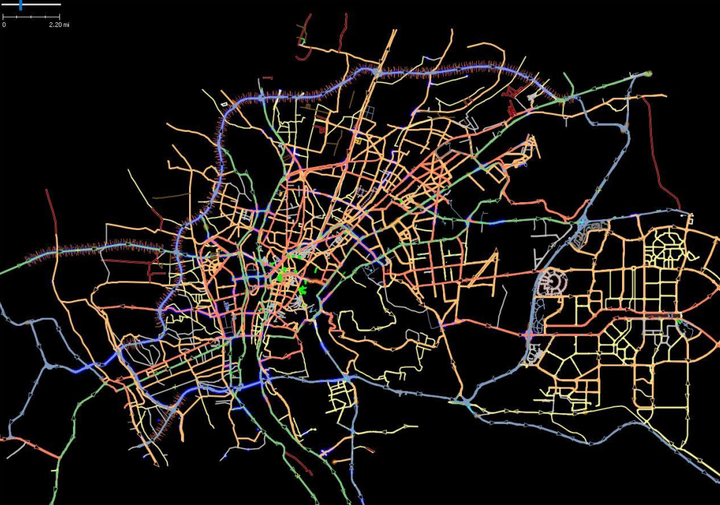A Bi-Level Approach for Calibrating a Traffic Simulation Model of Greater Cairo Region

Abstract
Traffic simulation has proved to be a vital tool for planning and operating transportation systems. Traffic simulation models need to be calibrated by adjusting model parameters to ensure the model’s ability to reproduce local traffic conditions and serve as a reliable test-bed for evaluating modification scenarios. This research developed and calibrated a mesoscopic traffic simulation model for the exceptionally large traffic network of Greater Cairo Region (GCR). The scope of the study is limited to calibrating traffic stream parameters, while a typical user equilibrium traffic assignment model was adopted. Open source traffic simulation software “DynusT” was used as a modeling platform. A wide range of field data was consolidated from previous related studies. The calibration procedure involved two levels: theoretical-based, and simulation based calibration. In the theoretical-based calibration stage, traffic stream parameters of the modified Greenshield’s traffic flow model was estimated using non-linear regression approach. On the other hand, the simulation-based calibration involved the estimation of the Anisotropic Mesoscopic Model parameter using a genetic algorithm optimization approach. A sensitivity analysis on estimated parameters values was conducted to verify the appropriateness of chosen values. Testing results revealed the potential of the adopted calibration approach and the credibility of estimated traffic stream parameters values. Limited discrepancy was observed between simulation-based link traffic volumes and actual ones in most observed links, with a normalized root mean square error (NRMSE) of 10.6 %.